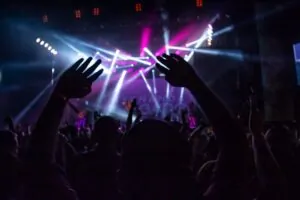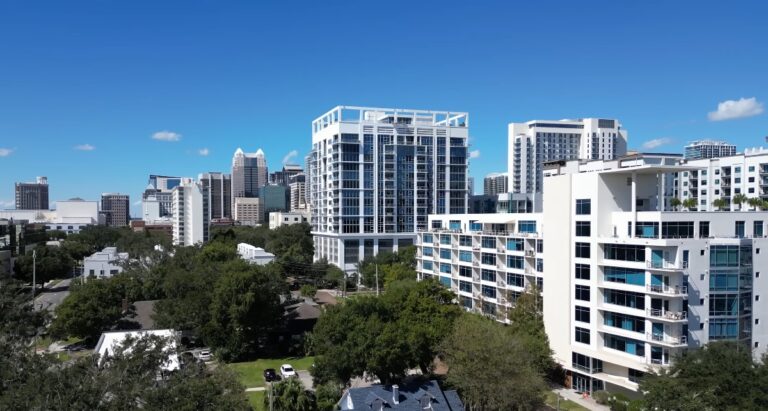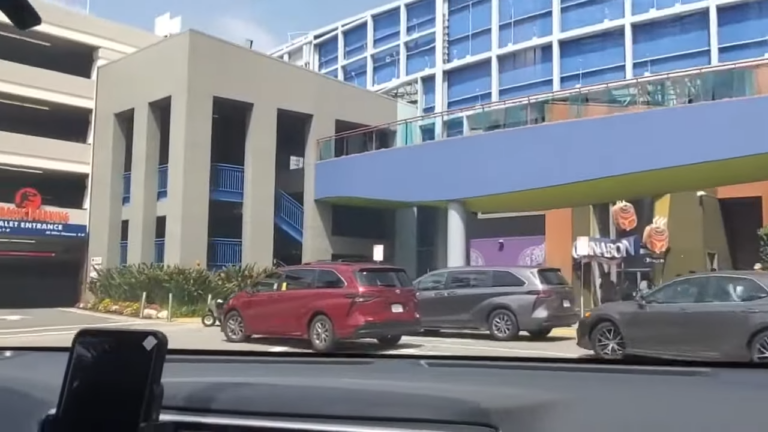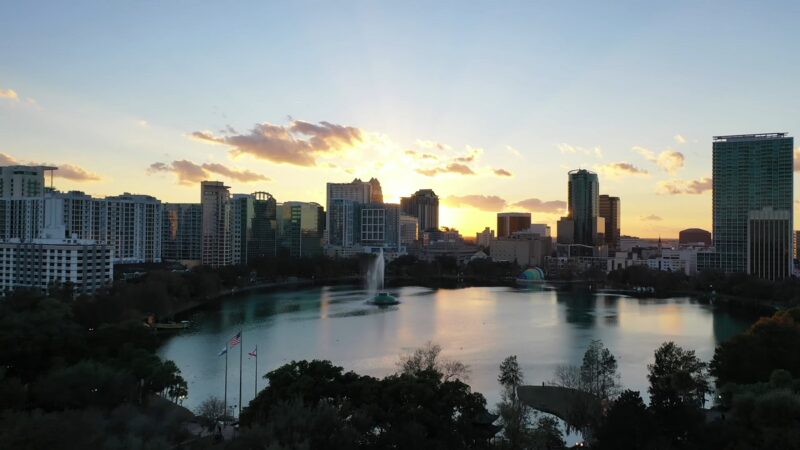
Orlando remains a major attraction for tourists, drawing millions annually to its world-famous theme parks, shopping districts, and entertainment hubs.
While it offers a variety of experiences, safety remains an important factor for visitors.
In 2025, efforts to enhance public security continue, addressing both crime and natural hazards.
Travelers should be aware of the city’s safety measures, potential risks, and best practices to ensure a smooth visit.
Table of Contents
ToggleCrime and Safety Statistics in Orlando
Orlando remains a top destination for visitors, but safety is an important factor to consider.
While the city invests in public security, certain areas have higher crime rates than others.
Law enforcement agencies actively work to reduce incidents, especially in tourist-heavy zones.

Crime Rates Overview
Orlando’s crime rate has fluctuated in recent years, with some areas improving while others continue to present challenges.
The city experiences both violent and property crimes, with property-related offenses being more common.
Violent Crime
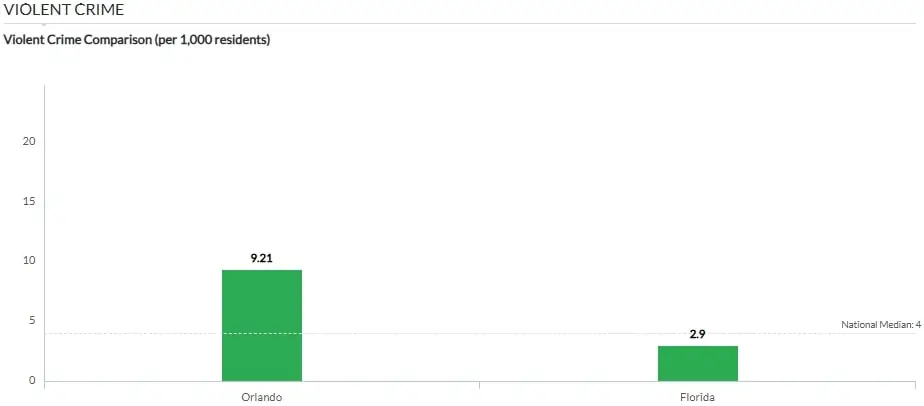
Includes assault, robbery, and aggravated battery. While Orlando’s overall violent crime rate has declined in certain areas, some neighborhoods still see higher incidents.
Tourists are less likely to be targeted for violent crimes, but isolated cases do occur.
Property Crime
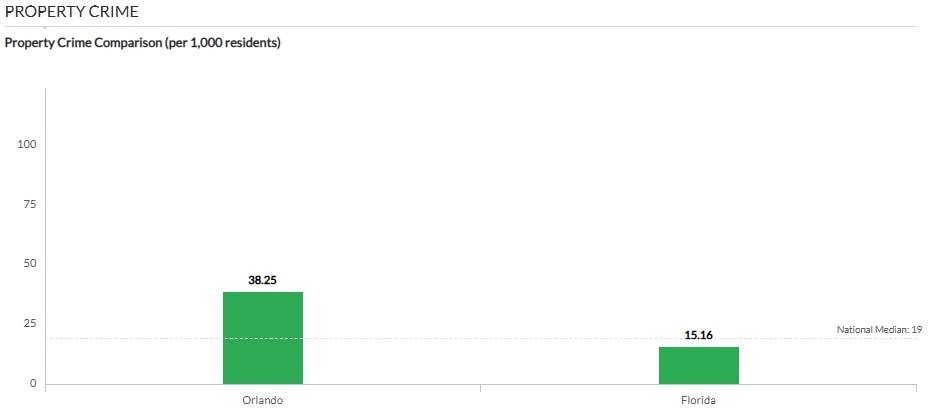
The most frequently reported offenses include theft, car break-ins, and vandalism.
High-traffic areas, particularly those near hotels, parking lots, and theme parks, see a greater number of incidents.
Criminals often target unattended belongings, rental cars, and hotel rooms with inadequate security.
Tourist-Specific Risks
Pickpocketing occurs in crowded spaces such as Disney Springs, International Drive, and major theme parks.
Scams targeting visitors include fake ticket sales, fraudulent vacation rentals, and high-pressure timeshare schemes.
Car break-ins are more likely in unsupervised parking lots or areas with limited surveillance.
Safe vs. Unsafe Areas
While Orlando has many safe neighborhoods, some parts of the city experience higher crime rates. Visitors should plan accordingly and be aware of their surroundings.
Safer Neighborhoods
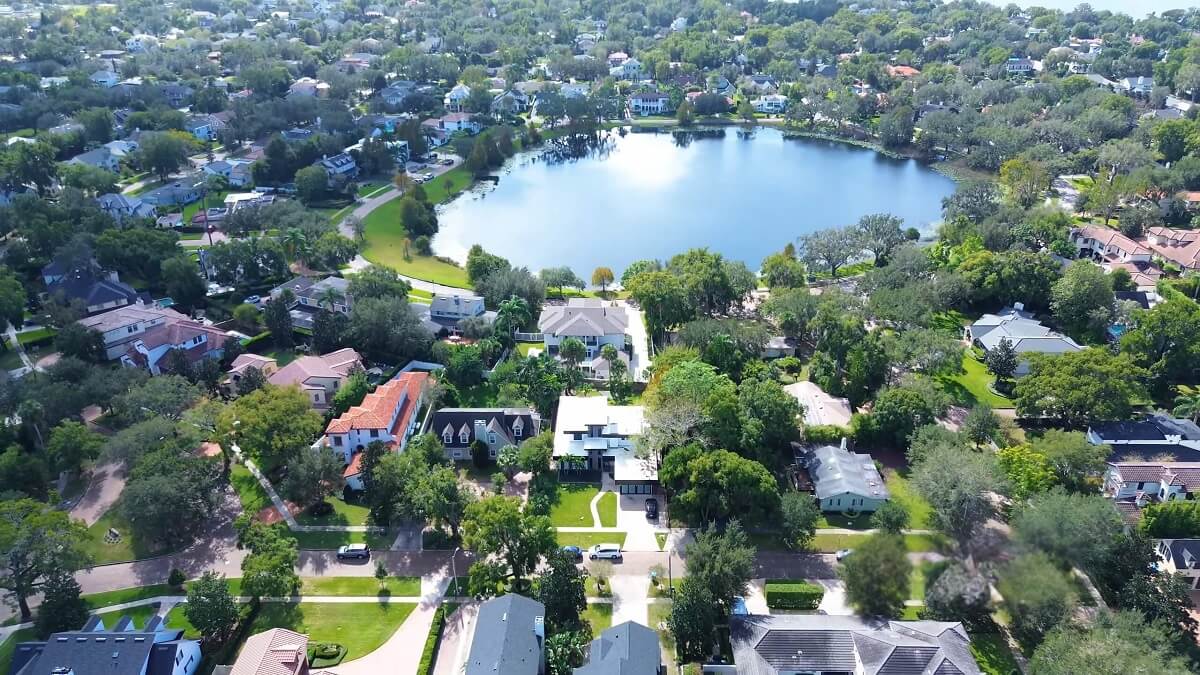
First, let’s take a look at safer neighborhoods:
- Winter Park – Known for its tree-lined streets, upscale shopping, and historic charm, Winter Park has a low crime rate and a strong police presence.
- College Park – A well-maintained residential area with a mix of young professionals and families, offering a safe environment with local businesses and restaurants.
- Celebration – Originally developed by Disney, this master-planned community has a reputation for being one of the safest areas in the region.
- Lake Nona – A growing community with modern amenities, strong law enforcement presence, and a focus on health and innovation.
- Dr. Phillips – An affluent area known for its proximity to theme parks, luxury homes, and high-end dining options, with low crime rates.
Areas to Exercise Caution
After that, let’s check out the areas where caution should be exercised.
- Pine Hills – Frequently cited for higher crime rates, including theft and violent crime. This area is best avoided at night.
- Mercy Drive – A neighborhood with a history of gang-related activity and frequent police reports of violent crime.
- Carver Shores – While some areas have improved, property crime and theft remain concerns.
- Washington Shores – Crime rates here tend to be higher, with incidents of robbery and burglary being more common.
For visitors, staying in well-lit, busy areas and avoiding isolated streets or unfamiliar neighborhoods after dark can significantly reduce risks.
Comparing Orlando to Other Cities
Orlando’s crime statistics can be better understood when compared to other large metropolitan areas. While some factors make it safer than certain cities, challenges still exist.
Comparison with Miami
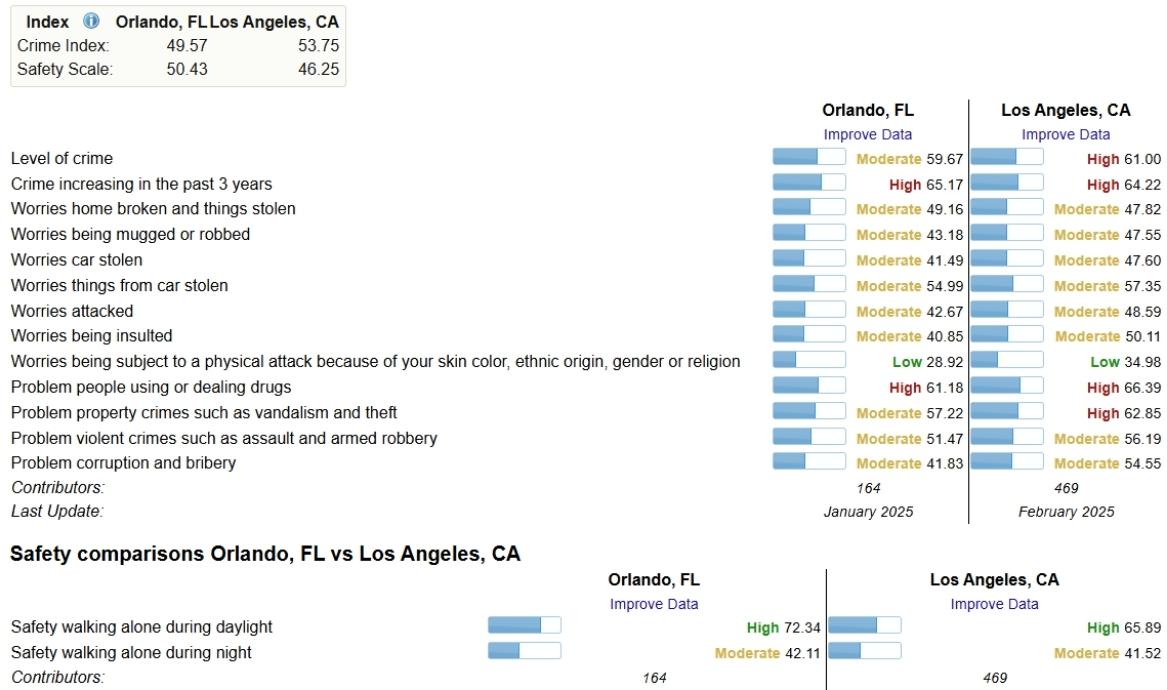
Orlando has lower violent crime rates but experiences similar levels of property crime.
Miami’s higher rate of organized crime and gang activity makes certain areas more dangerous at night.
Comparison with New York City
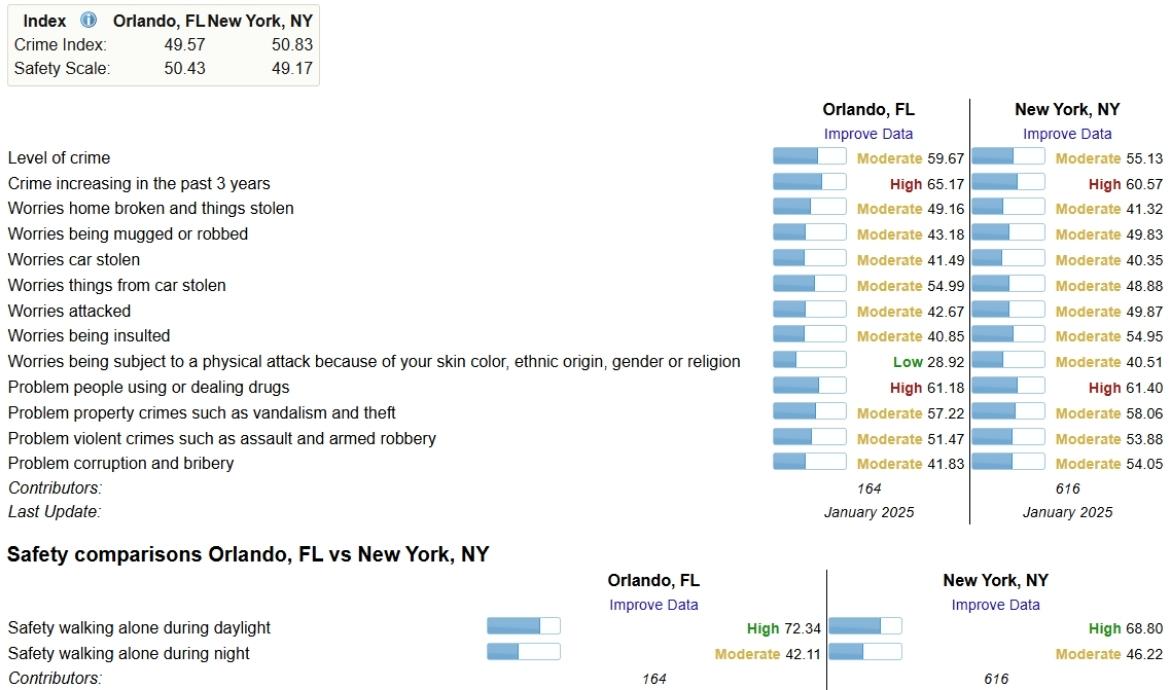
New York has a larger police presence, resulting in lower overall crime rates in many tourist-heavy districts.
Orlando has fewer densely populated areas but experiences more property crimes per capita.
Comparison with Los Angeles
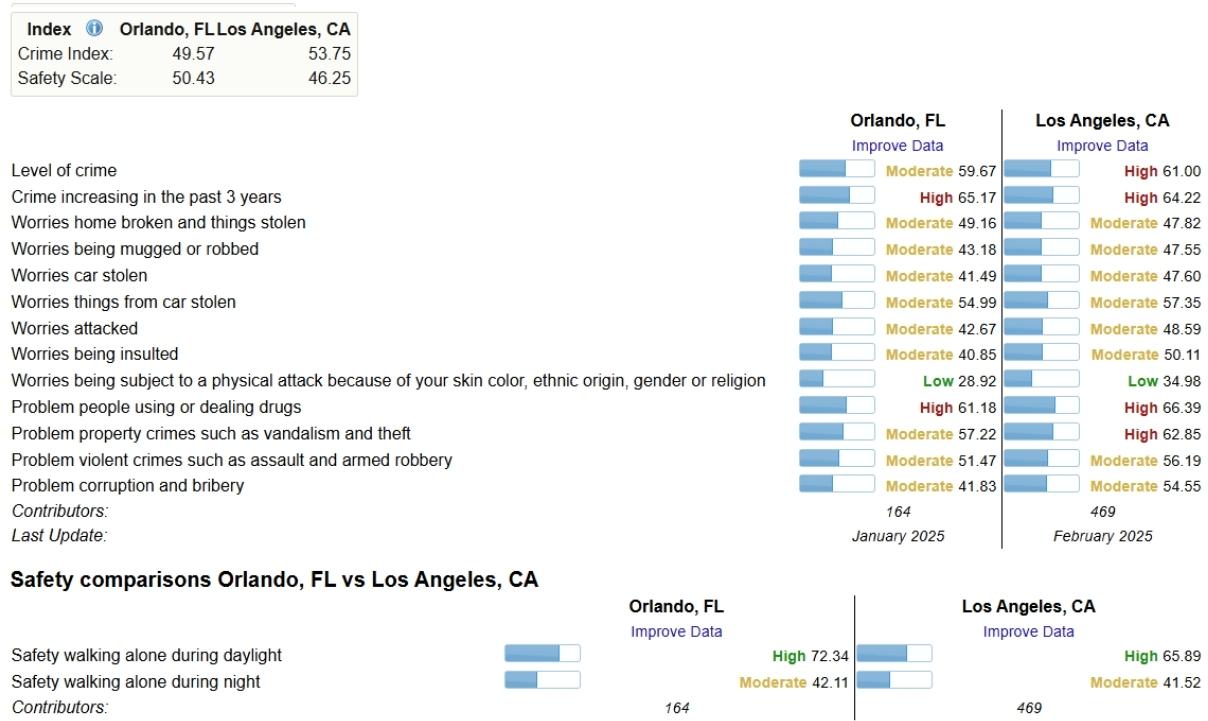
Los Angeles has more issues related to homelessness and gang violence in some areas.
Orlando has a stronger focus on tourist safety, with law enforcement actively patrolling major attractions.
While Orlando has its risks, proper planning and awareness allow visitors to experience the city with confidence. Law enforcement efforts, security measures at key locations, and an informed approach to personal safety help ensure a positive visit.
Safety in Tourist Areas
Orlando’s top attractions, including its world-renowned theme parks and bustling entertainment districts, bring in millions of visitors each year.
With high foot traffic comes an increased focus on security to ensure a safe experience for all.
Theme parks have implemented strict safety protocols, while areas like International Drive and downtown Orlando have law enforcement patrols and surveillance in place.
Despite these measures, visitors should still take precautions to protect themselves and their belongings.
In case you come across an area you don’t know anything about and you want to want to stay safe while surfing the internet to find proper info, be sure to use VPN trial version that will help you do just that.
Theme Parks & Major Attractions
Walt Disney World, Universal Studios, and SeaWorld are among the most visited theme parks in the world, making security a top priority.
Here you can read more about the attractions you can visit in Orlando.
Park officials use a combination of technology, trained personnel, and strict entry protocols to maintain safety.

Security Measures:
- Metal detectors at all entrances to screen for prohibited items.
- Bag checks conducted by security personnel.
- Surveillance cameras monitoring guest areas, ride queues, and public spaces.
- Park security teams trained to handle emergencies quickly.
Personal Safety Tips:
- Keep belongings secure by using zippered bags or crossbody pouches.
- Avoid carrying large amounts of cash; use credit or mobile payments when possible.
- Be mindful of pickpockets, especially in crowded areas and while waiting in lines.
- Stick to well-lit paths when moving through the park after sunset.
- Familiarize yourself with emergency exits and park policies.
- Use lockers for storing valuables instead of leaving them unattended on rides.
If traveling with children, establish a meeting point in case of separation.
Health and Emergency Precautions:
- Stay hydrated and wear sun protection, as heat exhaustion can be a concern.
- Follow ride safety instructions to avoid injuries.
- Report any suspicious behavior to park security immediately.
International Drive & Downtown Orlando
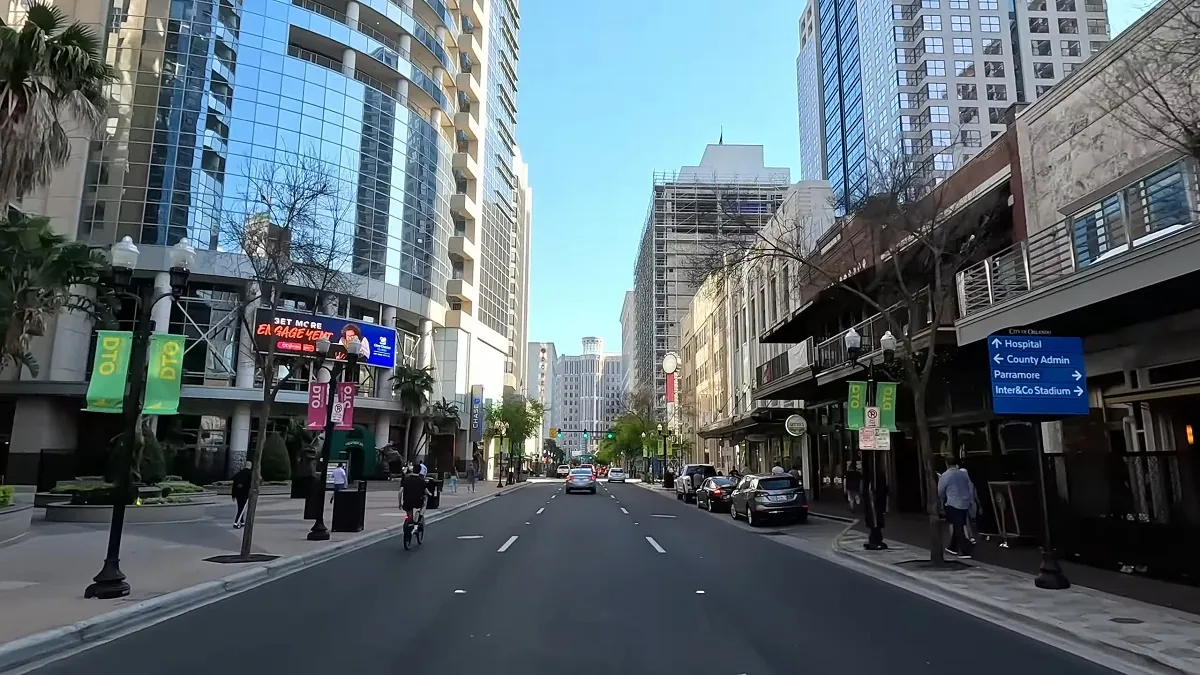
International Drive and downtown Orlando are hotspots for nightlife, dining, shopping, and entertainment.
These areas attract large crowds, particularly during peak travel seasons. While security is present, visitors should remain alert to potential risks.
Security Measures in Place:
- Increased police patrols, particularly on weekends and during large events.
- Security cameras monitoring streets, parking garages, and businesses.
- Well-lit sidewalks and designated pedestrian zones.
Best Practices for Staying Safe:
- Travel in groups, especially at night.
- Use well-known transportation services such as Uber, Lyft, or official taxis.
- Avoid unlicensed drivers offering rides outside designated pick-up areas.
- Keep personal items secure and avoid displaying expensive electronics or jewelry.
Be aware of common scams, such as inflated prices at bars or deceptive street performances.
Use ATMs inside banks or reputable establishments rather than standalone machines.
Additional Considerations for Nightlife & Entertainment Districts:
- Be cautious when accepting drinks at bars or clubs. Never leave them unattended.
- Watch for aggressive sales tactics from vendors or promoters offering “too good to be true” deals.
- Plan transportation in advance to avoid walking alone in unfamiliar areas.
- If attending concerts or large gatherings, familiarize yourself with exit locations.
Orlando’s attractions offer world-class experiences, but personal awareness is essential for a smooth visit. By following safety recommendations and being mindful of surroundings, visitors can enjoy everything the city has to offer without unnecessary risks.
Weather & Natural Disaster Preparedness
Orlando is known for its warm climate and tropical weather conditions, which can present challenges for visitors unfamiliar with Florida’s seasonal shifts.
The city experiences high temperatures for much of the year, sudden thunderstorms, and an annual hurricane season.
While these conditions are manageable, travelers should be prepared to adapt to changing weather patterns and take necessary precautions to stay safe.
Orlando’s Climate and Weather Risks
Orlando has a humid subtropical climate, meaning it experiences high temperatures and significant rainfall, particularly in the summer months. These conditions can lead to heat exhaustion, dehydration, and risks related to severe thunderstorms.
- Heat and humidity: Daytime temperatures often exceed 90°F (32°C) in summer, with high humidity making it feel even hotter.
- Sudden thunderstorms: Short but intense storms occur frequently, often bringing lightning and heavy rain.
- UV exposure: The sun’s intensity in Florida is high year-round, increasing the risk of sunburn and heat-related illnesses.
Safety precautions include:
- Drinking plenty of water throughout the day to prevent dehydration.
- Wearing lightweight, breathable clothing and using sunscreen to protect against UV rays.
- Seeking shade or air-conditioned spaces during peak afternoon heat.
- Finding indoor shelter during thunderstorms to avoid lightning hazards.
- Avoiding outdoor activities in open areas during high storm activity.
Hurricane Season Preparedness
Hurricane season in Orlando lasts from June through November, with the highest activity typically occurring between August and October.
While direct hurricane impacts are not as frequent as in coastal cities, heavy rainfall, strong winds, and tornadoes can still pose a risk.
Key tips for hurricane preparedness:
- Monitor weather updates—The National Hurricane Center and local news stations provide real-time storm tracking.
- Have an emergency plan—Familiarize yourself with hotel evacuation routes and local shelter locations.
- Prepare for power outages—Charge electronic devices in advance and keep portable power banks available.
- Know emergency contact numbers—Keep local emergency services, hotel staff, and transportation providers on hand.
- Pack essential items—A small emergency kit with bottled water, snacks, and a flashlight can be useful during storms.
Most hotels and theme parks have structured hurricane plans in place. If a storm warning is issued, follow official guidance and avoid unnecessary travel.
Transportation & Travel Safety
Getting around Orlando is relatively straightforward, with public transportation, rideshare options, and rental vehicles widely available.
However, visitors should remain aware of potential safety concerns, particularly in unfamiliar areas.
Public Transportation Safety
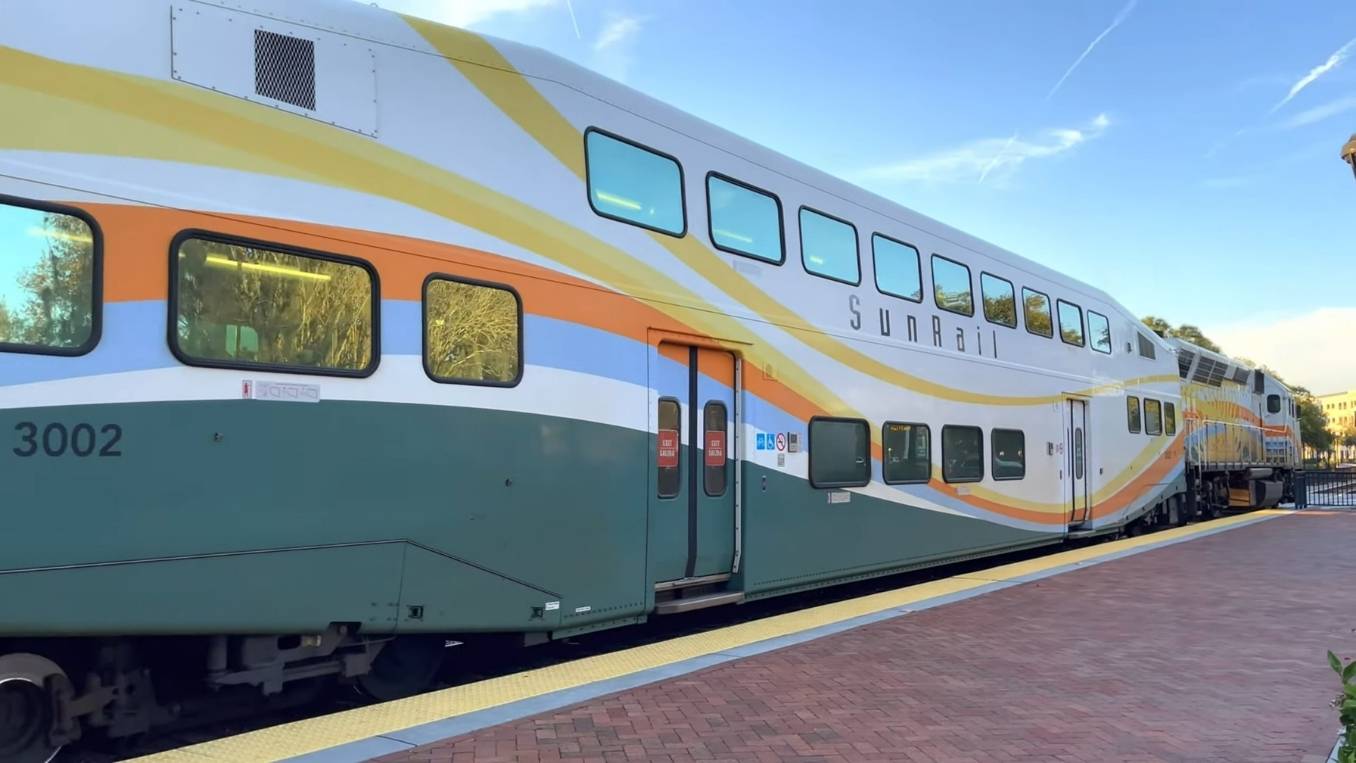
Orlando’s public transportation system includes LYNX buses and SunRail trains, as well as taxis and rideshare services.
While these options are generally safe, there are some risks travelers should keep in mind.
Best practices for safe public transit use:
- Use official apps (Uber, Lyft, LYNX, or SunRail) to verify transportation routes and fares.
- Avoid using public transit late at night in less populated areas.
- Keep wallets, phones, and other valuables secured to prevent pickpocketing.
Be aware of scam drivers posing as legitimate rideshare operators—always confirm vehicle details before entering.
Driving in Orlando
Many visitors choose to rent cars to navigate the city, but Orlando’s traffic conditions and driving culture can be challenging. Congested highways, aggressive drivers, and frequent construction zones contribute to potential risks.
Important driving considerations:
- Follow Florida’s seatbelt laws—All passengers must wear seatbelts, and children require proper car seats.
- Stay alert in tourist-heavy areas—International Drive and theme park entrances experience heavy traffic and distracted pedestrians.
- Avoid leaving valuables in the car—Theft from parked vehicles can occur, especially in isolated or poorly lit areas.
- Obey speed limits—Speed enforcement is strict, particularly in school zones and near toll roads.
- Watch for sudden lane changes—Tourists unfamiliar with road layouts often make abrupt turns or lane switches.
Parking garages near theme parks and hotels offer more security than open lots, reducing the chance of vehicle break-ins.
Walking Safety
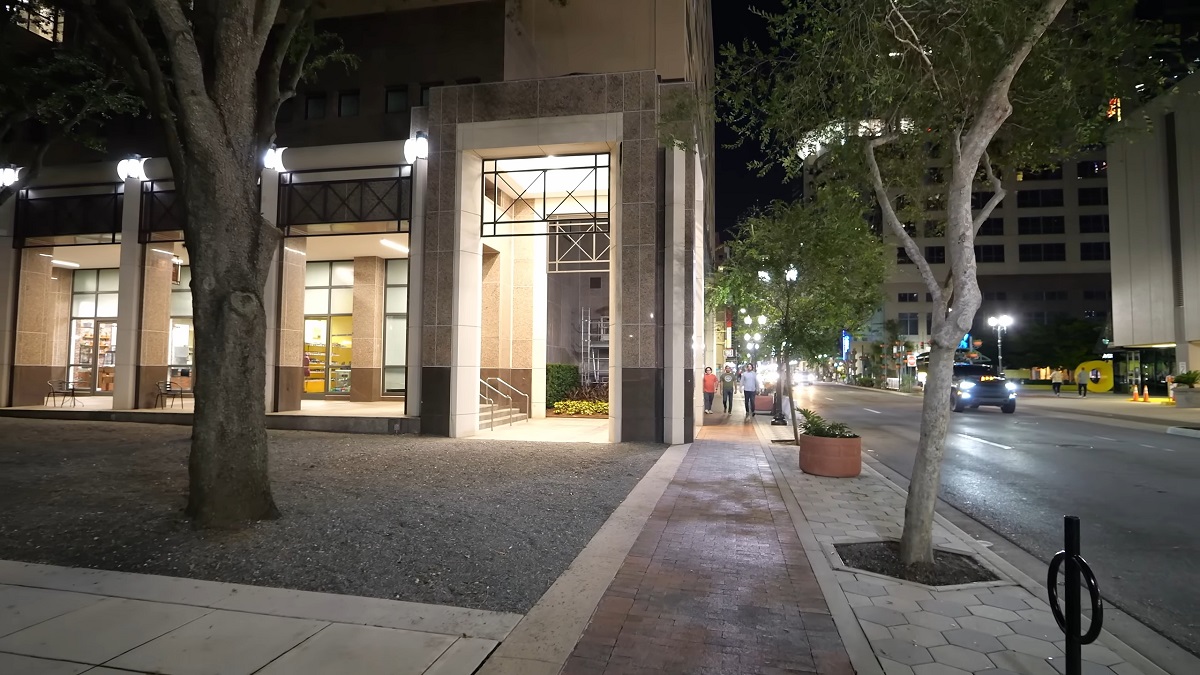
While some areas of Orlando are pedestrian-friendly, certain roads lack crosswalks, and drivers are not always attentive to foot traffic.
Safe walking practices:
- Use designated crosswalks—Jaywalking increases the risk of accidents, especially on multi-lane roads.
- Stay visible at night—Wear light-colored clothing or carry a small flashlight when walking after dark.
- Stick to populated areas—Avoid alleys or isolated streets, particularly in unfamiliar neighborhoods.
- Be cautious near nightlife districts—Downtown Orlando and International Drive have busy pedestrian areas but also occasional incidents of crime late at night.
With proper precautions, transportation in Orlando remains safe and efficient, allowing visitors to focus on enjoying their trip.
Common Scams & How to Avoid Them
Orlando attracts millions of tourists each year, and unfortunately, some individuals seek to exploit visitors through scams.
Many fraudulent schemes target those unfamiliar with the city, particularly around major attractions, hotels, and transportation hubs.
Knowing the common tricks used by scammers can help visitors avoid financial losses and ensure a smooth trip.
Timeshare and Ticket Scams
Discounted theme park tickets and timeshare offers can seem tempting, but they often come with misleading information or outright fraud. Scammers use aggressive sales tactics, pressure tactics, or deceptive advertising to lure in unsuspecting tourists.
Warning signs of a scam:
- Unlicensed ticket sellers: Some individuals claim to offer cheap theme park tickets but provide invalid or counterfeit passes.
- Too-good-to-be-true deals: Discounts that seem unrealistic often involve hidden fees or last-minute charges.
- High-pressure timeshare sales: Free gifts or incentives may come with relentless sales pitches that pressure attendees into signing contracts with little time to review details.
How to avoid these scams:
- Purchase tickets only from official sources, such as theme park websites or authorized vendors.
- Be wary of individuals selling tickets in public spaces, including near attractions and hotels.
- If attending a timeshare presentation, read all contract details carefully before making commitments.
- Walk away if a salesperson refuses to answer direct questions or tries to rush a decision.
Street Performer and Charity Scams
Street performers and charity collectors are common in Orlando’s busiest areas. While many entertainers and organizations operate legitimately, some take advantage of tourists who assume they are supporting a worthy cause.
Common tactics used in scams:
- Aggressive solicitation: Some performers and fake charity workers pressure passersby into giving money.
- Unexpected charges: A performer may pose for a photo and then demand payment after the fact.
- Fake charity collections: Scammers use official-looking donation bins and claim to represent well-known causes.
How to stay cautious:
- If someone aggressively demands money, walk away without engaging.
- Avoid making cash donations on the street—contribute directly to verified charities instead.
- Politely decline photo requests from performers unless willing to pay for their time.
Fake Ride Services
With rideshare apps being a popular form of transportation, some scammers attempt to pose as drivers to lure unsuspecting passengers into their vehicles.
These fake drivers often wait near hotels, airports, and theme parks, looking for travelers who may not double-check details before getting into a car.
How these scams work:
- Unmarked or unofficial vehicles: Some scammers drive personal cars with no connection to rideshare services.
- Fake confirmations: They may ask, “Are you waiting for a ride?” to trick riders into assuming they are the correct driver.
- Cash payment requests: Legitimate rideshare services do not require cash transactions.
How to stay safe:
- Only use the official app to book rides—never accept unsolicited offers.
- Always verify the license plate, driver name, and car model before getting in.
- Never share personal details or payment outside of the app.
- If something feels suspicious, cancel the ride and request another driver.
Scammers rely on distraction and deception to take advantage of travelers.
By staying alert and following these precautions, visitors can reduce their chances of falling victim to common tourist scams in Orlando.
Final Thoughts
Orlando provides a welcoming and well-secured environment for tourists, particularly in major attractions and established neighborhoods.
While some areas require caution, the city has implemented effective security and emergency preparedness measures.
Visitors who remain aware of their surroundings and follow basic safety practices can enjoy their trip with confidence.
Related Posts:






